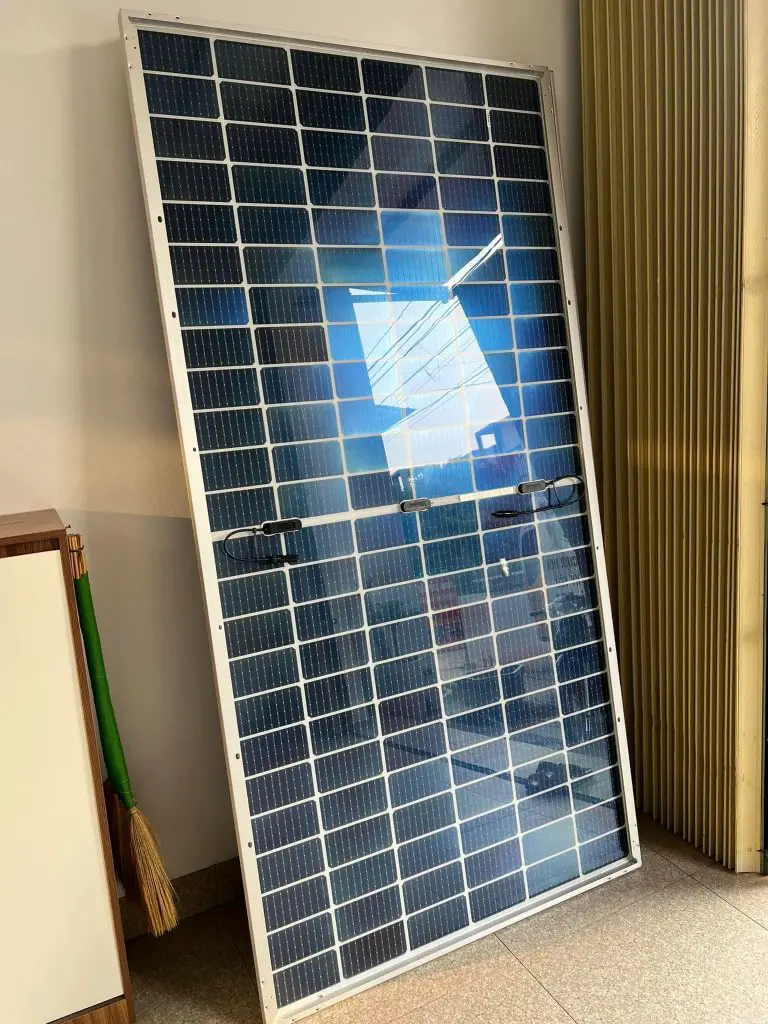Increasing demand for solar panels creates customers’ enthusiasm to know about the manufacturing and materials of solar panels. These queries help the customer to identify effective solar panels with high-quality materials.
Apart from the other questions, silicon focuses on the discussion as the major manufacturing material. So, why is silicon used in solar panels?
For many other people, if you want to reveal the answer to this question, stay with us and read the article.
In this writing, we will present the reason for using silicon, the type of silicon, and other materials used to make solar panels.
Contents
Why Do We Use Silicon in Solar Panels?

The chemical properties of silicon have some special characteristics, especially the crystalline form of the semiconductor. Besides, the principal design parameters for solar cell manufacturing are bandgap energy and minority carrier diffusion. So, the objective of a solar panel is to absorb light with the semiconductor, which is the reason for using silicon.
Let’s understand the matter. Silicon is one of the highest quality semiconductors that is ideal for solar cell production.
The superior quality of silicon’s electronic, optical, thermal, and environmental properties are best for producing solar cells. Also, the availability and affordability make it more usable for solar panels.
Besides, the light-absorbing efficiency and the standing capability of any weather condition enhance its use as the raw material of photovoltaic cells.
You can rely on this material for more sunlight detection systems, and the surface of the solar panel is designed to perform in heavy rain. Silicon makes this process reliable and effective.
What Type of Silicon is Used in Solar Panels?
Among the various types, crystalline silicon is used for producing solar cells. Crystalline solar cells are reliable and efficient enough for manufacturing solar panels.
There are two properties of crystalline silicon. These are monocrystalline and multi-crystalline.
The efficiency of the monocrystalline solar panel is more than 25%, and this type of solar panel is efficient enough for use for a long time.
Using silicon goes through a purifying process, increasing the purity of silicon up to 99%. On the contrary, polycrystalline structures contain the atomic structure of a single crystal.
Similarly, the anti-reflective coating works perfectly with the silicon surface. It can prevent up to 35 percent of sunlight reflection and increase sunlight to generate electricity.
Besides, the color of a crystalline silicon solar cell is blue. This blue color is produced because of the silicon’s pattern and purifying process.
You might hear the name of monocrystalline and polycrystalline solar panels. These names come from the raw material of the solar panel. A cell with a single silicon crystal is called a monocrystalline solar panel.
In the same way, multi-crystalline or polycrystalline solar panels use multiple semiconductor structures. This process produces polycrystalline solar panels.
So, the type is important because of the efficiency of the solar panel.
What Other Materials Are Used for Solar Panels?

Silicon is the only part of the solar panel manufacturing process. The solar panel-making process brings six different materials together. The common parts of a solar panel are:
- Silicon
- Metal frame
- Glass sheet
- Coating
- Bus wire
- Plexiglas
The metal frame is used to confine the structure of the solar panels, and it is very important for outdoor usage. Steel structure frames help the panels to become tightened and prevent the risk of damage.
The glass sheet is used as a glass coating to increase the durability and protection of PV cells. It makes the surface strong and smooth enough to get high-quality finishing.
The coating is very important because it deals with the efficiency of the solar panel. A perfect coating on the PV cells allows them to absorb more sunlight without reflection.
Besides, the insulation controls the temperature increases and leads the panel to efficiency.
So, the solar panel manufacturing process requires several materials with silicon. Silicon is the principal material, and it works together with other components to make an efficient surface.
The efficiency of a solar panel depends on the components, and it will act based on the quality of the materials. Every material is similarly important for making solar panels and PV cells.
Why Germanium is Not Used in Solar Cells
Germanium is a chemical element with the symbol Ge and atomic number 32. It is a lustrous, hard-brittle, grayish-white metalloid in the carbon group, chemically similar to silicon and tin. Pure germanium is a semiconductor with an appearance similar to elemental silicon.
Germanium is not used for producing solar cells because its efficiency is much lower than silicon. The manufacturing process purifies the silicon to get the most efficient solar cells.
It is impossible to make efficient solar cells using germanium, and the surface of the solar panel decreases sunlight-absorbing power.
Another reason is that germanium is very expensive and unavailable for producing plenty of solar cells. This earth metal requires a complex mining process that is too much costlier than silicon.
On the contrary, silicon is collected from the sand, and the refining process is much cheaper. You can find sand everywhere, and it is affordable.
The source of sand is numerous, and it has unlimited stock worldwide. For this reason, manufacturers prefer silicon instead of germanium.
Wrapping Up Why is Silicon Used in Solar Panels
Finally, we can say that silicon is more efficient, and the price is much lower than any other materials. Its efficiency, availability, and affordability make it the principal material of producing solar cells.
The solar industry is growing rapidly and increasing demand daily. To meet this demand, it is important to produce plenty of solar panels. Silicon reveals the opportunity along with affordable prices.
Now, you can install a solar panel easily at a minimum cost for your home, offices, or business. It will enable you to get twenty-five to thirty years of service. You can enjoy uncut power solutions in all seasons.